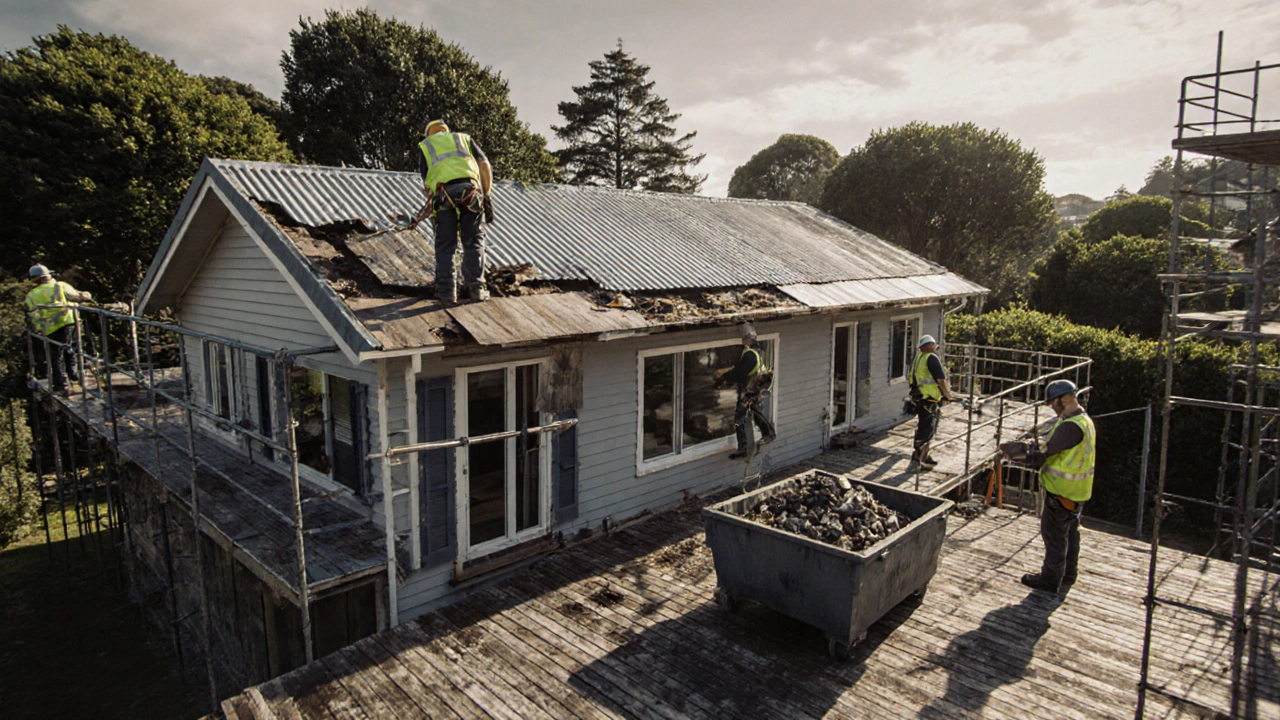Roofing Labor Cost: What You Really Pay for Installation and Repairs
When you hear roofing labor cost, the price you pay for skilled workers to install or fix your roof, not the materials. Also known as roofing installation labor, it’s often the biggest chunk of your total roof bill—sometimes more than the shingles or underlayment themselves. Most people assume the cost of a new roof is mostly about materials, but in reality, labor drives the price. A $10,000 roof might only have $3,000 in shingles. The rest? Workers climbing ladders, tearing off old layers, hauling debris, sealing edges, and making sure every nail is in the right spot. In the UK, where weather swings from heavy rain to freezing snow, proper installation isn’t optional—it’s survival.
What makes roofing labor cost, the price you pay for skilled workers to install or fix your roof, not the materials. Also known as roofing installation labor, it’s often the biggest chunk of your total roof bill—sometimes more than the shingles or underlayment themselves. go up? It’s not just about how many hours they work. Complex roof shapes—like hips, valleys, dormers, or skylights—require way more time and skill. A simple gable roof might take two days. A steep, multi-level roof with chimneys and vents? That’s five days, minimum. And then there’s removal. Tearing off old shingles isn’t just throwing them in a dumpster. It’s protecting gutters, covering windows, managing debris, and disposing of it properly. All that adds up. You’ll also pay more if the job needs scaffolding, which most homes over two stories require. And don’t forget: bad weather delays mean longer labor hours and higher bills.
roofing contractors, licensed professionals who handle roof installation, repair, and inspection. Also known as roofers, they’re the ones who actually do the work aren’t all the same. Some cut corners to offer low bids—skipping underlayment, using fewer nails, or leaving gaps around vents. That might save you $500 now, but it’ll cost you $5,000 in leaks and rot later. The best contractors don’t just install roofs—they inspect your attic, check for rot, and tell you if your decking needs replacing. That’s part of the service. And if they’re not insured? You’re liable if someone gets hurt on your property. Always ask for proof of insurance and a written estimate that breaks down labor versus materials.
Don’t just pick the cheapest quote. Look for clarity. A good estimate will list hours, crew size, daily rates, and what’s included—like cleanup, flashing replacement, or warranty coverage. If it just says ‘$8,000 for a new roof,’ walk away. The roof repair cost, the price to fix leaks, damaged shingles, or flashing issues without replacing the entire roof. Also known as partial roof replacement, it’s often cheaper but only if caught early is usually less than a full replacement, but only if you act before water gets into the rafters. A small leak fixed now can save you from a full roof tear-off later.
And don’t forget roofing materials, the products used to cover and protect your roof, including shingles, metal, tiles, and underlayment. Also known as roof coverings, they directly affect labor time and difficulty. Asphalt shingles are faster to install than clay tiles or metal panels. Metal roofs need special tools and training. That’s why labor costs vary even for the same house. A slate roof might cost twice as much to install as an asphalt one—not because the material is twice as expensive, but because each tile has to be hand-nailed and sealed. The material you choose changes the labor equation.
What you’ll find below are real stories from homeowners who’ve been there—how much they paid, what went wrong, what saved them money, and how to spot a contractor who’s actually good at their job. No fluff. Just what works.

